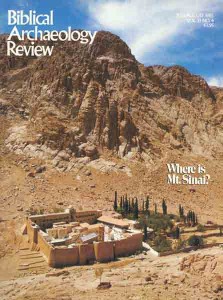Should the Exodus and the Israelite Settlement Be Redated?

On the surface, the radical redating of the Exodus and the Israelite conquest of Canaan proposed by Emmanuel Anati in the accompanying article, “Has Mt. Sinai Been Found?” is very attractive. It solves problems, there is no doubt. The question is, does it create other problems even more difficult than those it solves?
Professor Anati was prompted to examine the question of the date of the Exodus when he discovered a venerated mountain named Har Karkom near the Negev-Sinai border that bore a striking resemblance to the Mt. Sinai described in the Bible. Could Har Karkom be Mt. Sinai? Professor Anati wondered. The immediate problem with this suggestion is that the floruit of religious activity on Har Karkom that Anati documents ended in about 2000 B.C., and this date is about 750 years before the generally accepted date (G.A.D.) for the Exodus (in about 1250 B.C.). There was no human activity at Har Karkom—at least as demonstrated by the archaeological evidence—at any time near the 13th century B.C.
Professor Anati was also struck by the fact that, except for some minor Egyptian mining activity, there appears to have been no human occupation in Sinai in the 13th century B.C., the G.A.D. for the Exodus. Indeed, there was no human occupation in the Sinai, as demonstrated by the archaeological evidence, during the entire Late Bronze Age (1550–1200 B.C.).
Already a library member? Log in here.
Institution user? Log in with your IP address.

